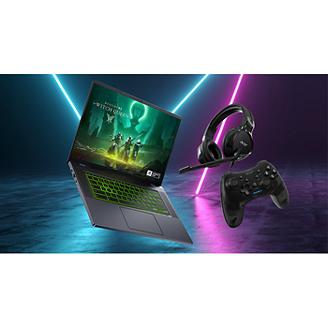A
little bit of preamble – I purchased a ConceptD CT300-51A system as a
replacement for another pre-built system; Corsair One. I had the Corsair One
for three years before the processor failed, hence the need to look for a new
system.
Whilst
Corsair may well have cornered the market on small form factor powerful desktop
machines with the Corsair One range – it comes with a cost, both in terms of
the price tag and the fact the system is built in such a way as to make
upgrading it almost impossible. This is fine for a creator such as myself who
is looking for a system that can handle high graphics work load and casual
gaming – but not so good when a key component fails. In my case the I7-7700K
processor failed completely and burnt out the graphics card with it. Left with
a now very expensive doorstop I decided to look around for replacements.
Acer
is a company I have brought from before; my desktop monitor and laptop are from
Acer. The laptop (a Predator PT515-51) has served me very well and very
faithfully. I highly recommend it to people. With that in mind I had a look at
the range of desktop machines Acer produced and found the new ConceptD line. I
was intrigued; a high-end desktop that was built with creators and casual
gamers in mind? A machine that was upgradable if my future needs
changed. A machine that had everything I needed, and a little more to boot.
Now,
there is a good argument for buying a pre-built off the shelf desktop system.
Not everyone has the time, the need, or the knowledge to build their own PC.
Getting the right parts, considering liquid cooling v air cooling… Processors,
memory, storage, motherboard… It becomes a separate task in itself. Hats off,
however, to those that can and do build their own PCs. If you have the time,
knowledge and space to do it – go for it. But for those of us that want to hit
the ground running… A prebuilt off the shelf system can be more than you need
or want.
The
ConceptD comes in many different flavours with I5, I7 and I9 processors,
different memory configurations, different levels of storage, Windows 10 Home
or Pro, and a Nvidia RTX graphics card to boot. I went for a mid-level system,
with a I7-10700 processor, 16gb of ram, 1tb NvME SSD, 1tb HDD and an RTX 3070.
The low end of the mid-range. Other configurations are available.
First
impressions: the packaging was superb. Well thought out, well crafted, and 100%
recyclable and made from recycled materials. Big thumbs up to Acer on that one.
The box and contents were not too hefty, and easy to move for a lightweight
like me. Once opened you are presented with another small box that contains the
power cable, and then after a layer of protective packaging… The ConceptD.
The
machine screams minimalist with it’s white and black colours. The wood affect
top gives the PC a sublime feel, the image of green fields and opened space.
Too bad that it’s going on my desk, because my desk isn’t that large. It looks
nice sitting next to the Acer Predator Monitor I have, but I feel that I am
doing the ConceptD a disservice by not giving it more space.
*Caveat,
for the purpose of airflow I have made sure that there is enough space around
it.
Back
IO is sufficient for a user like myself – four ports for the graphics card,
LAN, Speakers – 2 USB 2 ports, 4 USB 3 ports. Front IO, 1 USB 3 port, I USB C
port a memory card reader. Sockets for headphones and microphone and a power
button.
Before
plugging everything in and switching on, I opened up the machine and replaced
the HDD with a 4tb one that had copies of all my work on it. With that change
made, and the machine sealed up again and everything plugged back in – time to
power up.
You
get a little “beep” from the ConceptD as it starts up, and it boots rather
quickly into Windows 10 Pro. Setting things up was the normal Windows
experience. There were no hitches or problems. Bloatware? Nope. The ConceptD
comes with an OS, Norton trial and two Acer programs to help your system. A
very pleasant surprise. It took me a day to set up and get back up and running.
Acer
claim a 40db sound level from the internal cooling fans, and to be honest when
doing something like this – you don’t hear them. Gaming however, things do ramp
up. Not to an exceptional level, but enough that you notice. The case doesn’t
feel overly warm to touch when put under load, and the thermals are well within
range for a system of this type. The system runs smoothly and has been well
built and optimised for Windows.
After
a few days of use, it feels “comfortable.” It has a nice aesthetic, and the
build quality feels solid. It has the look and feel of a very premium machine,
and the specs to match.
The
ConceptD is a good all round machine. It feels very much like it was aimed at
creators like myself, and that’s a good thing. Yes, it can handle the big games
when you want to do something different. But 3D rendering, Graphics processing,
Film editing, music… it handles those very well.
Cinebench
and CrystalDisk give decent scores – of course it depends on your flavour of
ConceptD. Mine get’s decent scores, and I went for a low-end machine in the
mid-range.
At
the end of the day these are just my personal thoughts. I’m enjoying using the
ConceptD, and if it means anything I recommend it.









